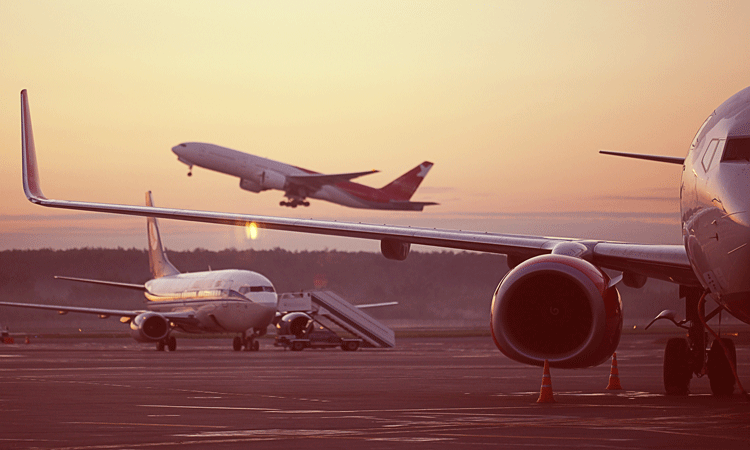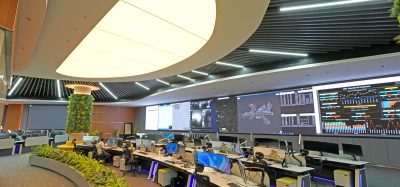Acceleration towards the future of air travel
Posted: 28 February 2022 | Thomas Romig | No comments yet
As aviation continues the long-road to recovery from the COVID-19 pandemic, Thomas Romig, Vice President Safety Security and Operations at ACI, explains the new opportunities and changes that have arisen within the overall ecosystem.


As the aviation system rises back up out of the deep low that the COVID-19 global pandemic caused to passenger traffic and aircraft movements, there are going to be changes that will take place within the overall ecosystem. Many of the changes and progressions were initiated prior to the pandemic. However, this unprecedented change to the aviation system has accelerated some of these initiatives and created new opportunities for others to be fast-tracked.
Healthy buildings
The focus for the foreseeable future will be on sustaining health measures to control risks, not just related to COVID-19, but those generated by other future outbreaks. Airports, and infrastructure operators in general, will need to focus on ensuring that any future buildings are conceived using design and construction principles that will reduce health risks to users. For example, the design of ventilation systems will need to consider the segregation of masses of air, as well as the use of high density filters, flows of people will need to be designed for the minimum number of crossings paths and creating walk-through facilities, infrastructure such as doors or light switches, that are traditionally high touch surfaces, will need to be automated to a maximum, and consideration will need to be given not just to the durability, but also the cleanability, of materials used.
The creation of healthy buildings is feasible when the infrastructure is new, however it is significantly more challenging, both technically and financially when the building must be transformed. Airports will need to consider the opportunities that are presented to integrate the principles of healthy buildings into any renovation work that has to be undertaken to mitigate the risks around future disease outbreaks.
Sustainable operations
Already before the COVID-19 pandemic, a strong focus has been put on the sustainability of the aviation system, especially looking at the environmental impact. The other pillars of sustainability – social and economic – have been bought into light through the events experienced since early 2020, driving the aviation system to look at its overall sustainability. Transformations are taking place in the environmental domain, e.g., with a commitment by the entire industry to reach net zero carbon emissions by 2050. At the same time, many aviation organisations, and airports, are looking to transform their business models allowing for other revenue streams than those that have traditionally been in focus. In parallel to this, airports are taking actions to be better integrated into the local social frameworks they operate and engage with, as well as changing the way they recruit and retain staff with a focus on creating a more socially sustainable organisation for the future.
As businesses, airports will be focused on ensuring that they are achieving sustainability targets, across all areas of the spectrum, and working with governments and partners to create a more sustainable aviation system. This is important in terms of reaching global sustainability, but also in terms of creating a more resilient aviation system that can face future variations in traffic in a more agile manner.
Seamless travel
Many changes have occurred to the travel experience over the past years. The use of digital technologies and drive to ensure a more efficient travel process have been key drivers to creating a seamless travel experience for passengers, with a focus on ensuring a minimum number of touch points through the entire process. This general intention has been pushed to the forefront through the pandemic with a focus on not just creating a seamless process, but a touchless one that allows the passenger to travel with a minimum number of interactions. Of course, the numerous health checks and paperwork currently required for travel does not allow for this, but as these challenges are further digitised or alleviated, the possibilities for a seamless and touchless travel experience will return.
The focus on the digitalisation of the travel process and reduction of touch points is an important transformation that not only allows for higher efficiencies, but also allows for a more dynamic and agile use of infrastructure and resources, through the deployment of common use technologies. The use of technology and automation where possible, rather than manual processes, will also allow for the aviation system to react in a more agile manner to changes in passenger demand and volumes as the limitation of staffing numbers will, to a certain extent, be alleviated.
Data driven operations
Data has become the world’s most valuable asset and, with adequate data mining and business intelligence processes, will be one of the keys to providing a smooth, seamless and efficient operation at airports and across the aviation system. The sharing of data throughout the airport community and beyond will allow for a multitude of transformations ranging from ensuring a more efficient and predictable operation, better use of available resources, anticipation of and effective management of disruptions or improvements in passenger flows, and product placements in commercial areas. The main challenge with data is being capable of harnessing it and transforming it into relevant business intelligence that will help drive the operation. For this, data scientists will be some of the most important future roles that will need to be hired in allowing for not only the development of reports and dashboards, but also for the deep analysis crossing over data from different fields that will help discover issue areas and unlock hidden opportunities.
Driving the overall airport operation using data will also allow for a more sustainable use of the airport system, with more efficient use of assets and better understanding of the opportunities that can be created. There are a multitude of systems that capture data within the airport system, these will be harnessed and aggregate in data warehouses that can be queried by multiple actors and systems at the same time creating a more transparent and common vision of the airport system.
Biography


In 2013, he changed roles to become the Department Head for the new Airport Operation Centre (APOC), where he was tasked with developing an airport-wide operational coordination and management centre that is aimed at increasing the efficiency and performance of the airport.
Following four years in this function, Romig took on the responsibility for developing the new Aviation Department managing all airside operations and developments. Finally, in 2019, he took on a new role as Head of the new Operations Control and Development Department, in charge of managing the daily operations of the airport, as well as identifying the future infrastructures and systems needed to meet forecasted demands.
In 2020, Romig joined ACI in Montreal with a primary focus on the relations with ICAO, and other industry organisations, for future regulatory developments.
New report from International Airport Review: Securing Airports in an Evolving Threat Landscape
International Airport Review has brought together top voices from across the global aviation security sector, including International Civil Aviation Organization (ICAO), ACI World, Fraport, Qatar Civil Aviation Authority, Winnipeg Airports Authority, and Smiths Detection to examine today’s most pressing airport security challenges and emerging threats.
This expert-led report provides a strategic assessment of the vulnerabilities facing airports in 2025, encompassing cyber-attacks, drone incursions, evolving geopolitical risks, and emerging technologies.
The result is a practical, insightful guide to strengthening airport resilience, anticipating risks before they escalate, and keeping your airport off the front page
Download the report for free and stay ahead of the security curve – READ FOR FREE NOW!
Issue
Related topics
Air traffic control/management (ATC/ATM), Airport construction and design, Airport development, Airside operations, COVID-19, Digital transformation, Emissions, New technologies, Passenger experience and seamless travel, Passenger volumes, Sustainability, Sustainable development, Terminal operations


















